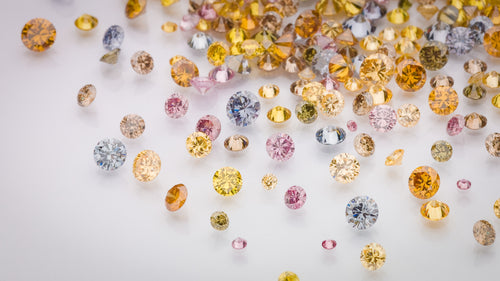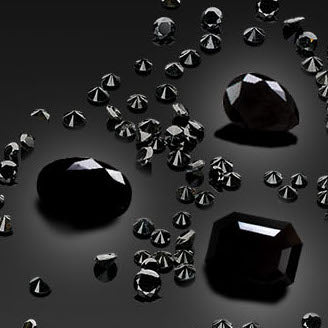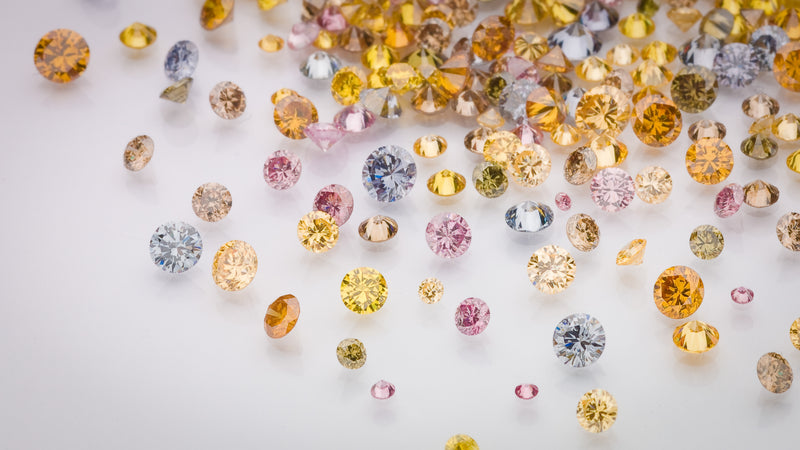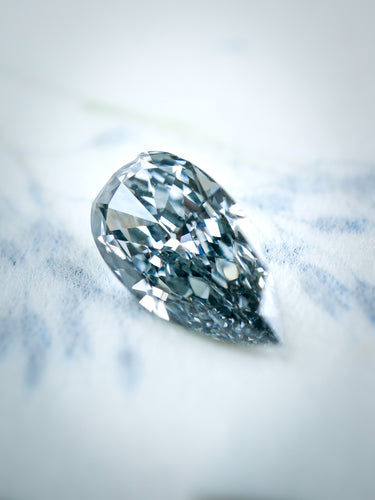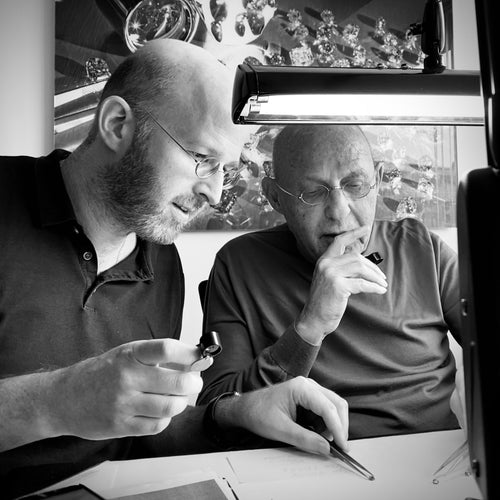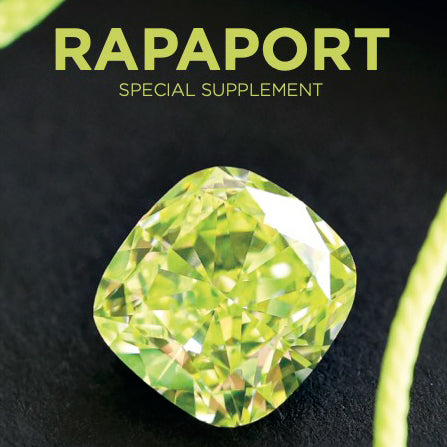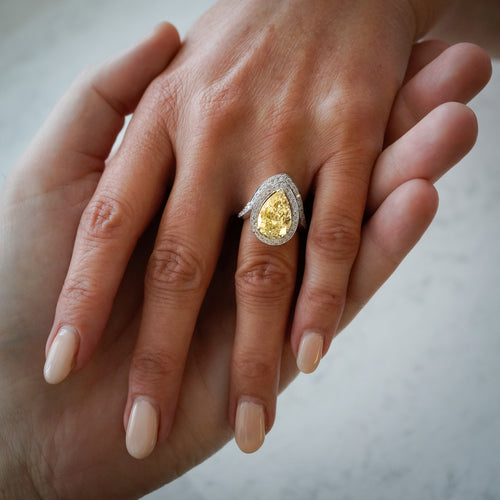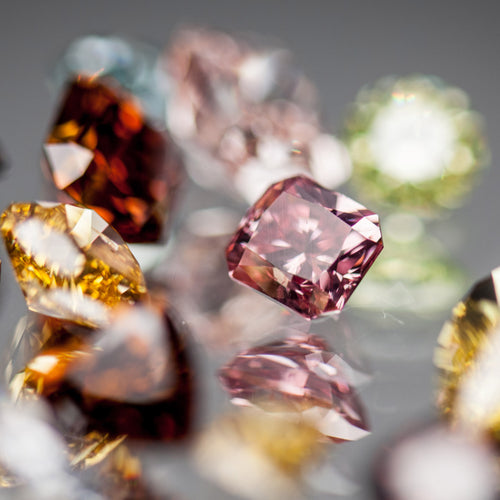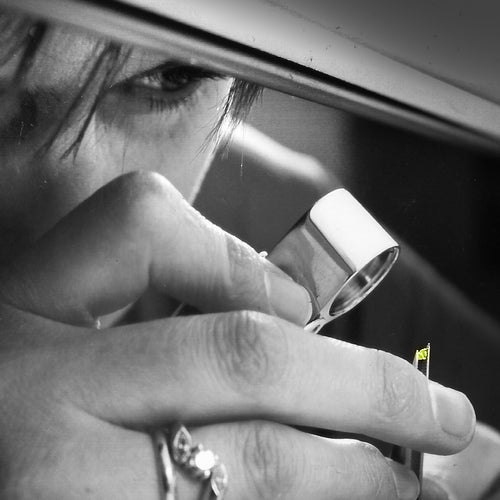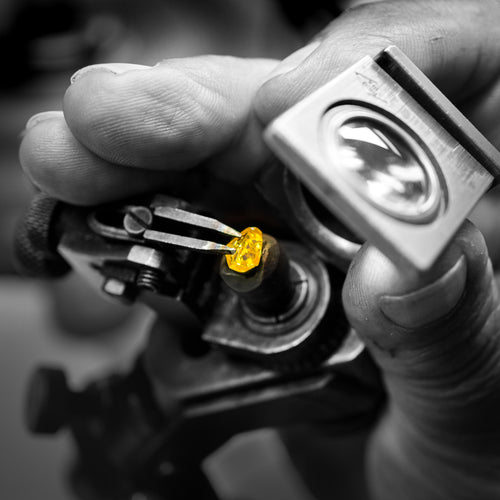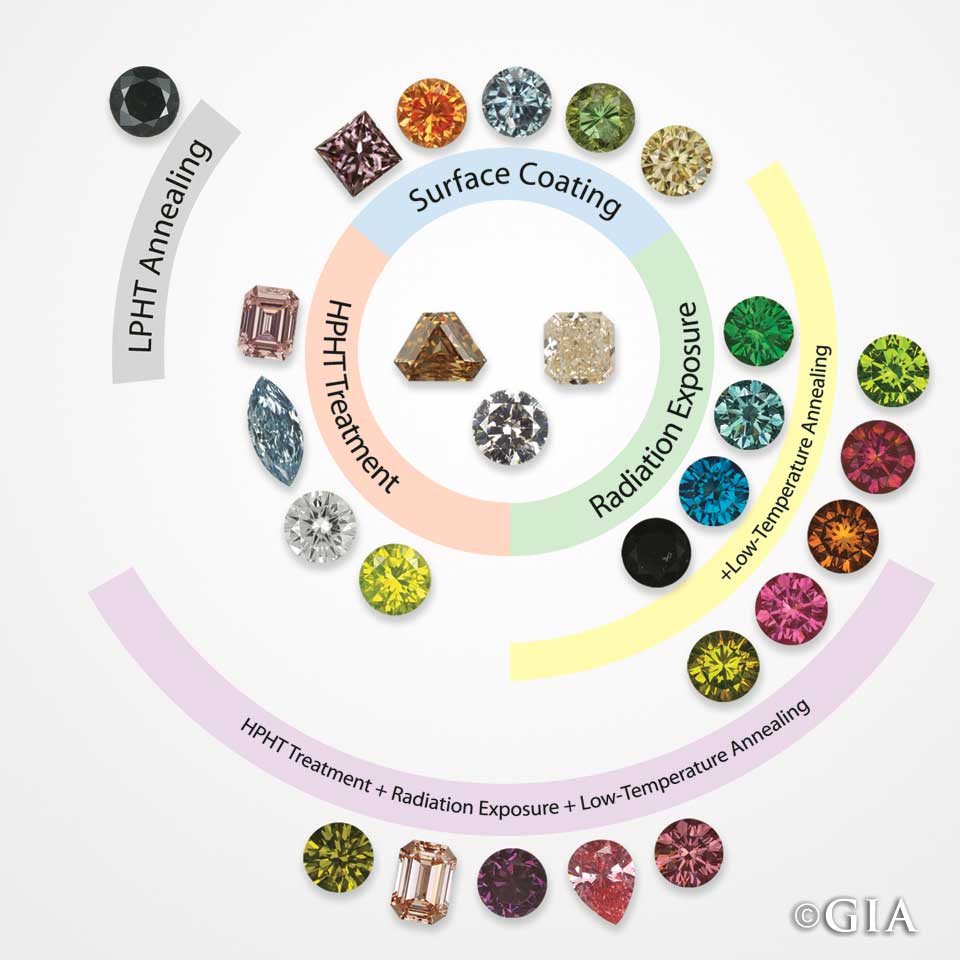
The aim of treating natural diamonds is to artificially improve their quality by changing one or several of their characteristics, thereby increasing their value. Such treatments generally target color and purity.
For color, treatments can help to resolve problems related to quantity and uniformity: if a jeweler needs a hundred or so identically colored diamonds to set in a pavé, treating an entire lot of diamonds will enable him to obtain a more uniform color.
The main types of treatments are presented hereunder. This list is as complete as possible. However, this area is still the subject of much research and development.
Modification of Color
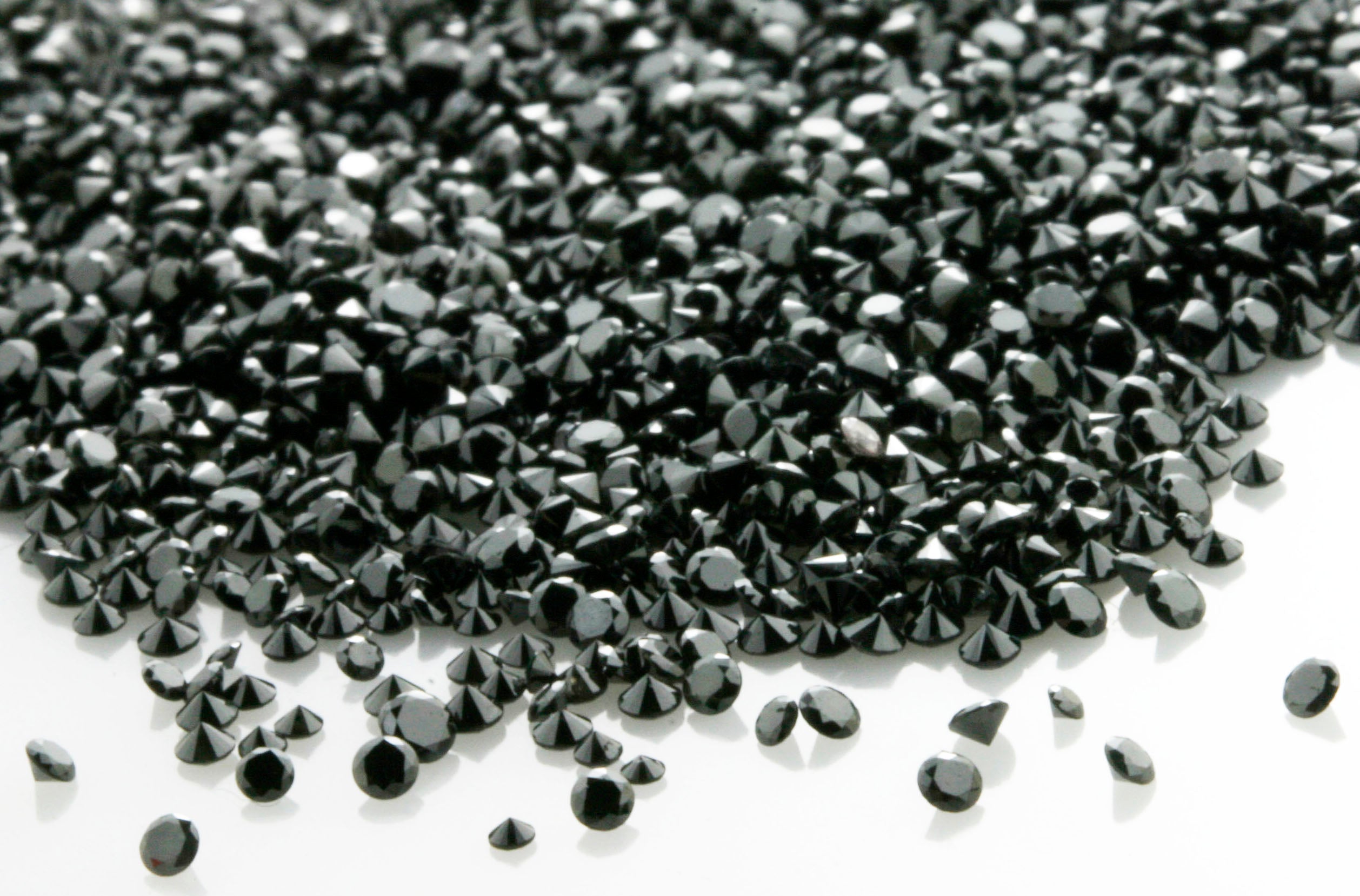
Heat treatment or annealing: this technique produces black diamonds. Low quality diamonds are exposed to very high temperatures (up to 1300°C) for several hours, until graphite residues appear in the heart of the crystal, making it dark and opaque or even uniformly black. All jewelers use heated black diamonds. Indeed, it is extremely difficult to find good quality natural black diamonds. Therefore they are much more expensive. Some laboratories deliver certificates for these treated diamonds.
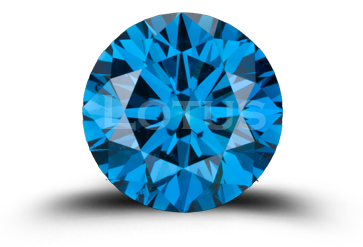
Irradiation: exposure of a diamond to a source of radiation will change the position of atoms within the crystal lattice, which will cause its color to change. Green, blue and black diamonds can be created using this technique. Laboratory certificates mention "treated".
Irradiation + low temperature annealing: after a first transformation via irradiation, the color can be changed again by exposing the diamond to temperatures of around 900°C. This will again re-position atoms within the crystal lattice, and atomic defects can be repaired or removed. The diamond will absorb light differently and will thus take on another color. As a general rule, brown, yellow orange, blue, pink and purple diamonds can be obtained with this treatment. Laboratory certificates mention "treated".

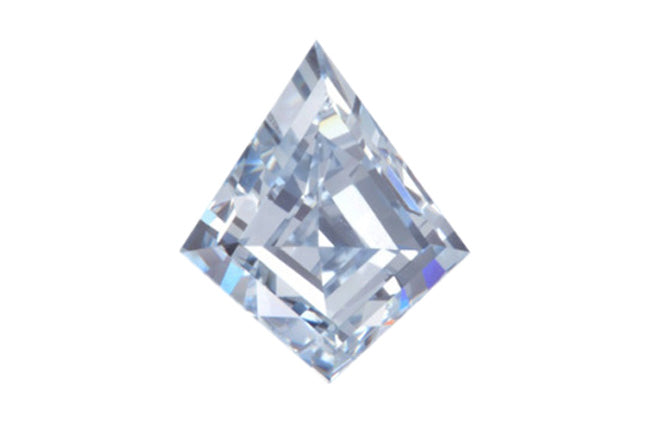
HPHT (high pressure, high temperature): this process subjects the diamond to a combination of very high pressure (HP) and very high temperature (HT), similar to the conditions in which diamonds are formed in nature.
This will cause imperfections in the crystal lattice to be "repaired", provoking a change in its color. Depending on the type of stone that is treated, the HPHT process can make a stone more colorless, or can produce blue, yellow orange, yellow green, pink or brown diamonds. Certificates mention "HPHT".
HPHT treatment + irradiation + low temperature annealing: For example of 0.77-carat HPHT-grown fancy intense yellow diamond prior to irradiation and annealing and after.
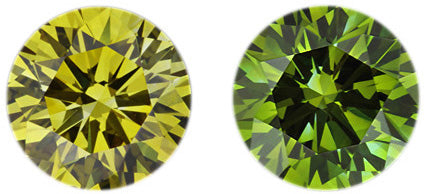
Coating: with this process, a thin layer of colored substance is deposited on the diamond in order to change its original color. Coating is not used anymore and laboratories do not issue certificates for these types of treated diamonds.
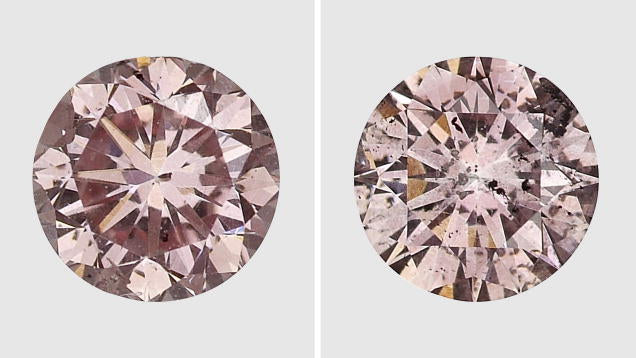
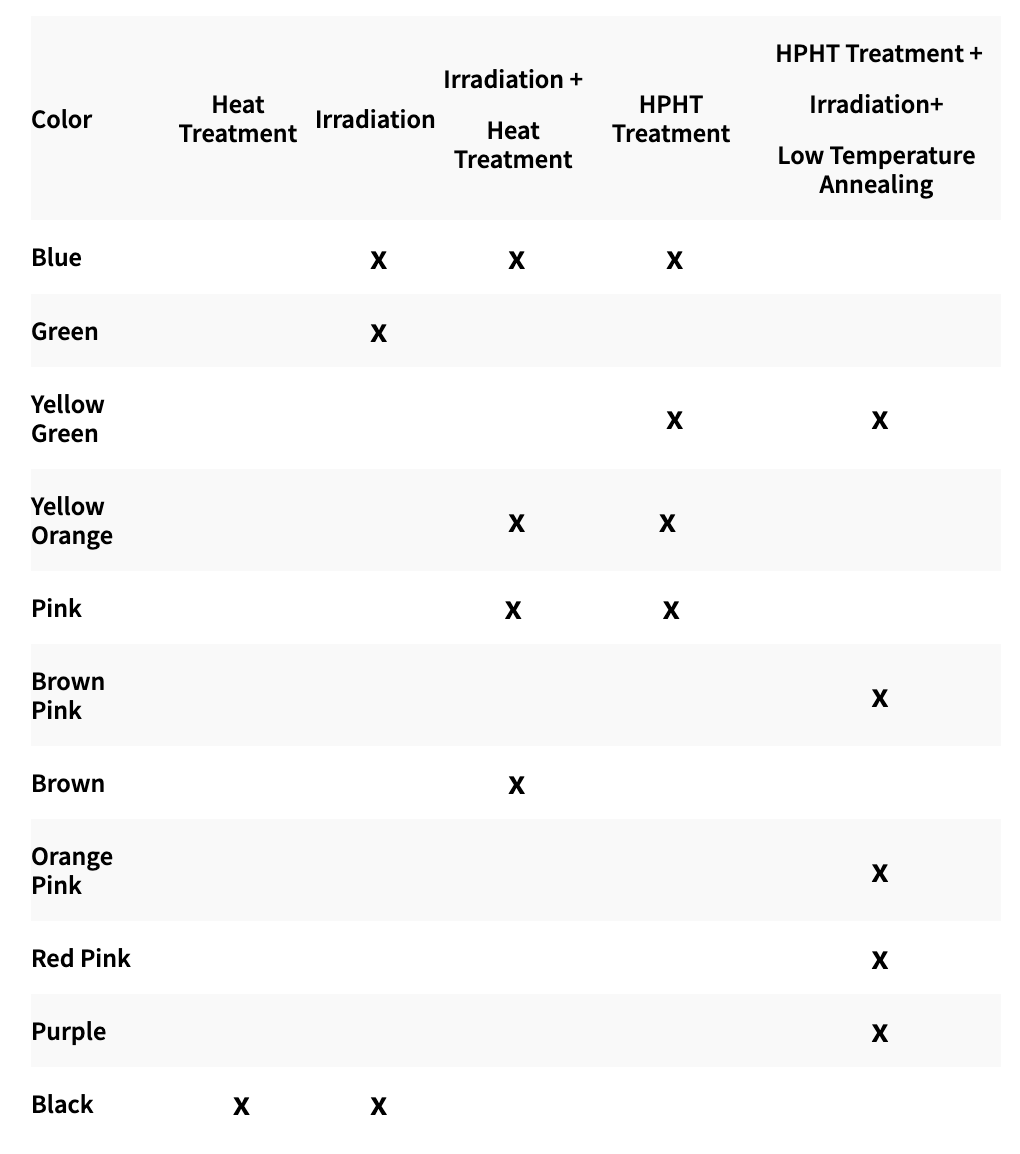
Modification of Purity
Crack filling: process of filling natural cracks or cleavages with substances that have a refractive index similar to that of diamonds. This way, the light is less refracted than it would be if the cleavage was filled with air - and therefore much less visible. Laboratories do not issue certificates for diamonds that have undergone this type of treatment.
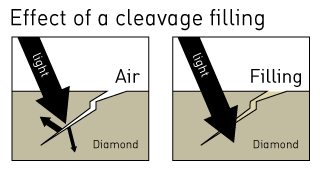
Laser drilling: this process aims to lighten or completely eliminate dark inclusions. A tiny canal is laser-drilled and high pressure boiling acid is then injected in the hole. Laser drills are mentioned on certificates.
It is important to mention that the modification of purity is not used anymore. Nowadays, diamond manufacturers prefer to keep the gemstones as they are, highlighting their natural beauty, instead of trying to artificially modify their nature. However, laser drilled stones can still be found on the market today. This can be explained by the fact that laser drilling was a very common process until recently. Of course, these diamonds don’t have the same retail value as untreated ones, but on the upside, they are beautiful affordable stones.
